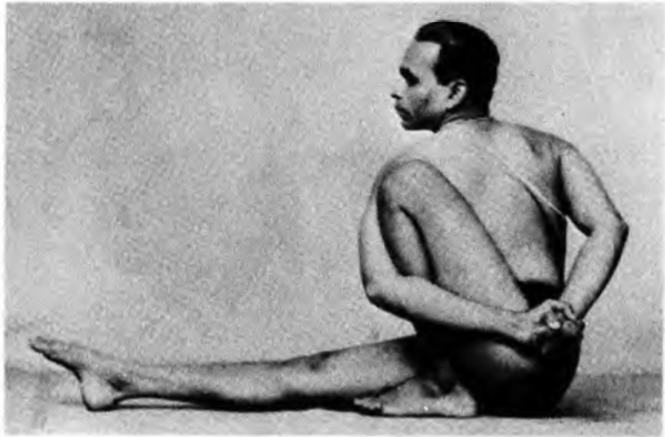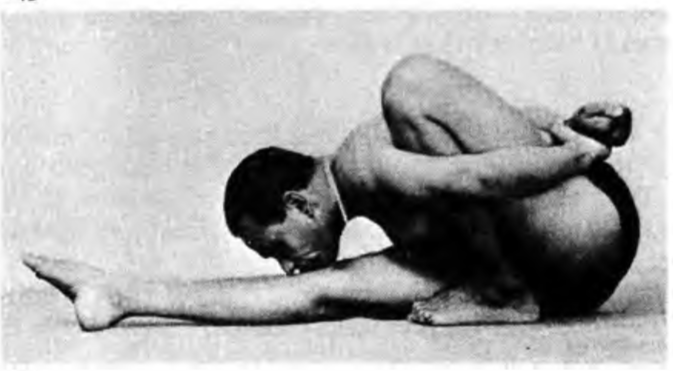Search your article
Marichyasana
Marichyasana – 5
This asana is dedicated to the sage Mar!chi, son of the Creator, Brahma. Mar!chi was the grandfather of Surya (the Sun God).
Technique
I. Sit on the floor with the legs stretched straight in front.
2. Bend the left knee and place the sole and heel of the left foot flat on the floor. The shin of the left leg should be perpendicular to the floor and the calf should touch the thigh. Place the left heel near the perineum. The inner side of the left foot should touch the inner side of the out stretched right thigh.
3· Stretch the left shoulder forward till the left armpit touches the per-pendicular left shin. Turn the left arm round the left shin and thigh, bend the left elbow and throw the left forearm behind the back at the level of the waist. Then move the right hand behind the back and clasp the left hand with the right at the wrist or vice versa. If that is not possible then clasp the palms or the fingers.
4· Now, turn the spine to the left, keeping the outstretched right leg straight. Remain in this position gazing at the outstretched right big toe and take a few deep breaths.
5· Exhale, and bend forward. Rest the forehead, then the nose, next the lips and lastly the chin on the right knee. (Plate 144.) While in this position, keep both shoulders parallel to the floor and breathe normally. Stay in the pose for about 30 seconds and see that the back of the entire extended leg rests on the floor throughout.
6. Inhale, raise the head from the right knee (Plate I43), release the hands, straighten the left leg and come to position I .
7· Repeat the pose on the other side for an equal length of time.
Effects
The fingers gain in strength by.the practice of this asana. In the pre ceding asanas (namely, Janu Sirasana , Ardha Baddha Padma Paschimottanasana and Triang Mukhaikapada Paschimottanasana the abdominal organs are made to contract by gripping a leg with the hands. In this pose the hands do not hold the legs. To bend forward and to rest the chin on the knee of the extended leg the abdominal organs have to contract vigorously. This creates a better circulation of blood round the abdominal organs and keeps them healthy. In the beginning it is very difficult to bend forward at all after gripping both hands behind the back, but it comes with practice. The dorsal region of the spine is also exercised in this pose.
Note. The four poses, Janu Sirasana, Ardha Baddha Padma Paschimottanasana, Triang Mukhaikapada Paschimottanasana and Marichyasana I, are preparatory poses for the correct Paschimottanasana. (Plate 161.) It is difficult for many to get a good grip on the feet in Paschimottanasana (Plate 160) even after several attempts. These four asanas give one sufficient elasticity in the back and legs so that one gradually achieves the correct Paschimottanasana as described later. Once this is done with ease, these four asanas can be practiced once or twice a week instead of daily.

